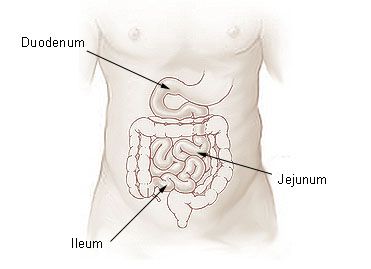-
 Superfluid
Superfluid
-
 rRNA
rRNA
-
 Iron bloom
Iron bloom
-
 HCFC
HCFC
-
 Gondwana
Gondwana
-
 Shell
Shell
-
 Hypersaline water
Hypersaline water
-
 CNT
CNT
-
 Pandemic
Pandemic
-
 Ardipithecus
Ardipithecus
-
 Kelvin's postulate
Kelvin's postulate
-
 Cutaneous
Cutaneous
-
 Thermal insulator
Thermal insulator
-
 Dolby Prologic
Dolby Prologic
-
 Mortar
Mortar
-
 Switch
Switch
-
 Otherness
Otherness
-
 ASIC
ASIC
-
 Photolyase
Photolyase
-
 Dipole moment
Dipole moment
-
 Time
Time
-
 Absorption spectrum
Absorption spectrum
-
 Niacin
Niacin
-
 MAN
MAN
-
 Anseriformes
Anseriformes
-
 Bioenergy
Bioenergy
-
 Naevus
Naevus
-
 Deforestation
Deforestation
-
 Manatee
Manatee
-
 Lore
Lore
Digestive enzyme
The digestive enzymes take part in digesting foods.
Role of the digestive enzymes
The digestive enzymes are synthesised by the digestive system and turn complex molecules into simple molecules which can be easily assimilated by the body. To do this they cleave specific chemical bonds. Each enzyme has its own specific substrate. There are three main types of these:
- proteolytic (which cleave proteins) ;
- glucolytic (which cleave carbohydrates) and ;
- lipolytic which cleave lipids).
Salivary digestive enzymes
Lingual lipase is also found in infants in whom it helps to digest lipids from breast milk. They are found in adults but only play a minor role.
The stomach's digestive enzymes
Pepsin (which is produced from pepsinogen) is an endoprotease which therefore cleaves proteins into peptides by breaking the peptide bonds involving aromatic amino acids (tryptophan, phenylalanine, tyrosine). It only acts with acid pH (between 1.8 and 4.4).
Gastric lipase hydrolyses short chain triglycerides into fatty acids and glycerol.
Intestinal digestive enzymes
Pancreatic amylase cleaves plant starch into maltose.
Maltase, secreted by the mucosal cells, hydrolyses maltose into glucose in the brush border on the surface of epithelial cells lining the intestine.
Sucrase, lactase, maltase and isomaltase act on sucrose, lactose, maltose, and isomaltose respectively.
Trypsin, chymotrypsin, and carboxypeptidase cleave peptide bonds.
Pancreatic lipase breaks triglycerides down into glycerol and fatty acids.
 The digestive tract produces digestive enzymes that break down complex molecules into nutrients. © DR
The digestive tract produces digestive enzymes that break down complex molecules into nutrients. © DR
Latest
Fill out my online form.



